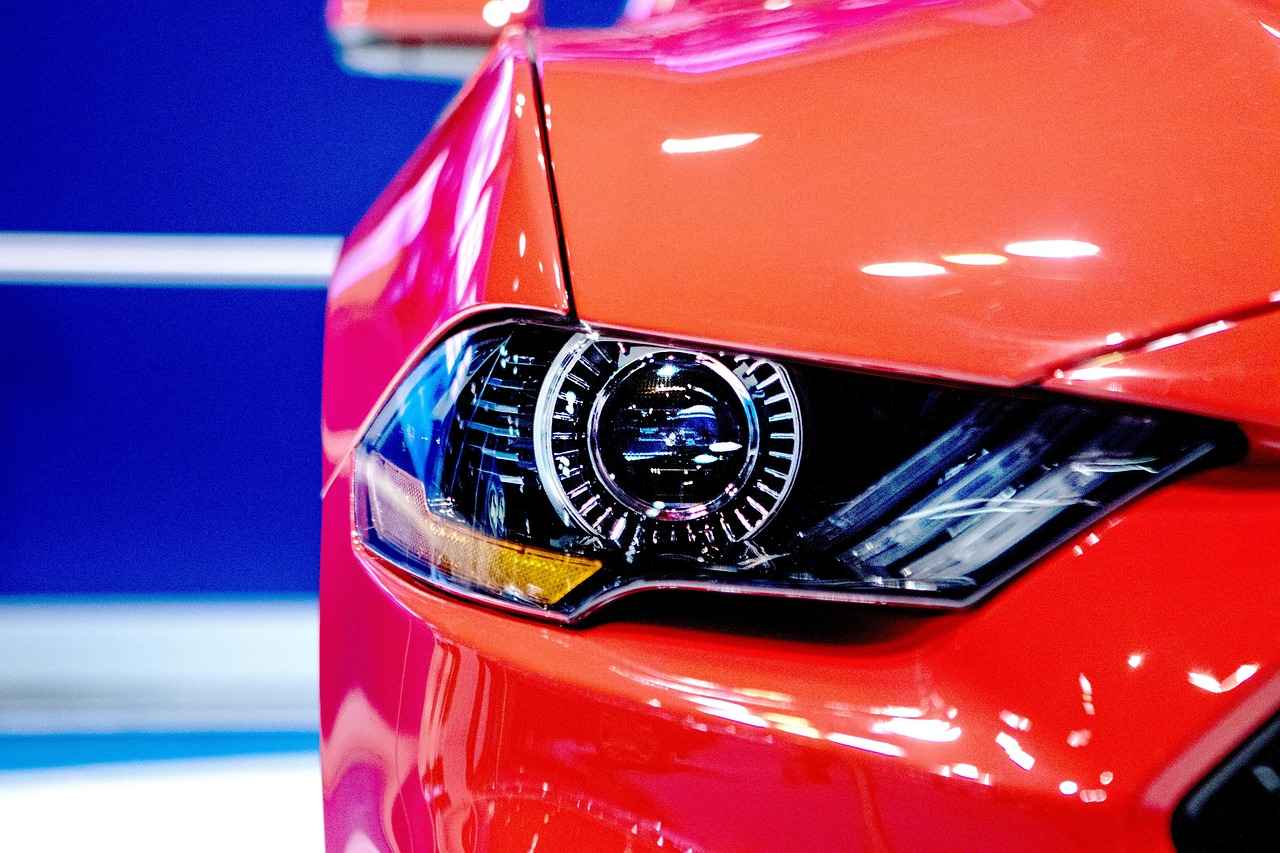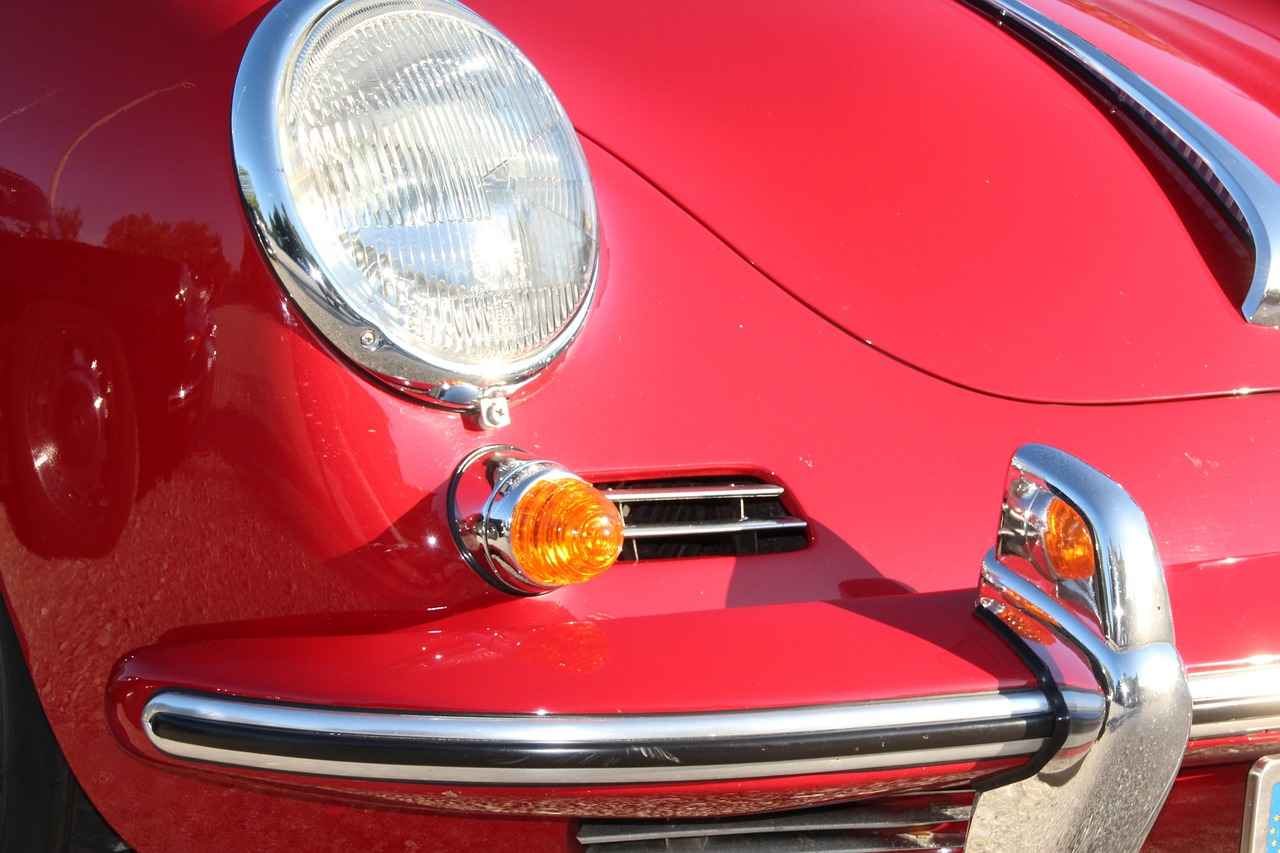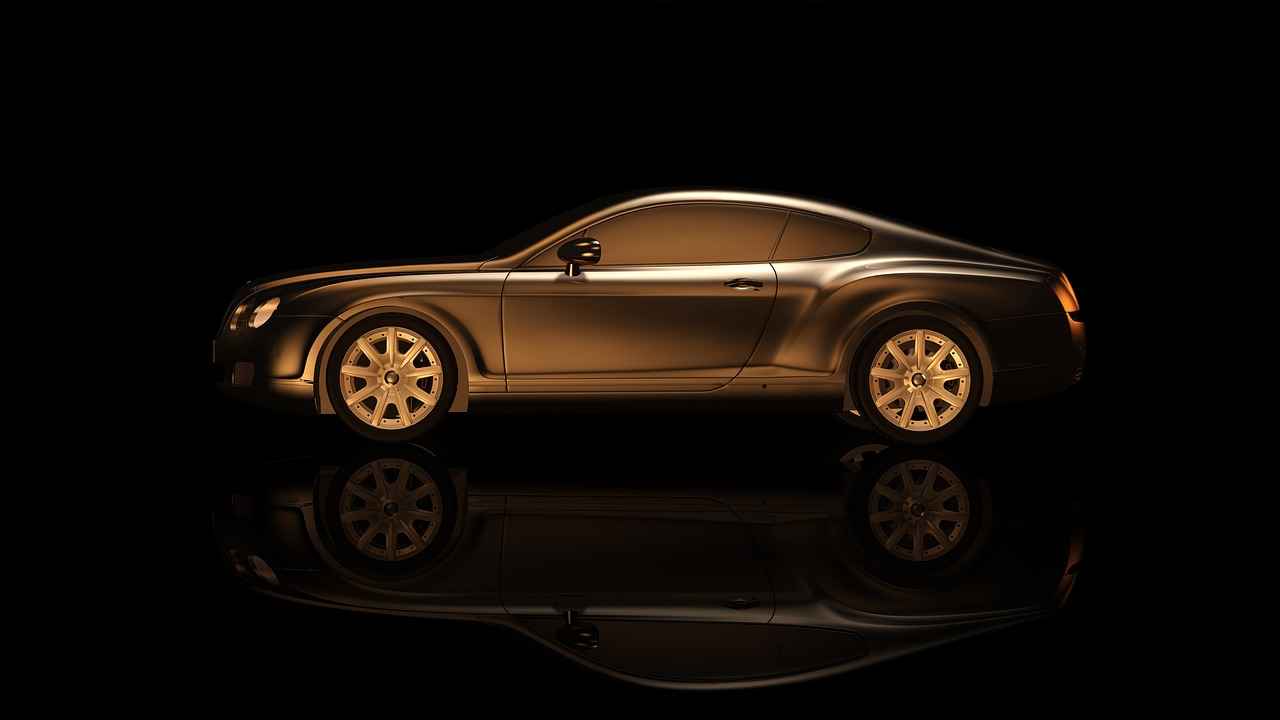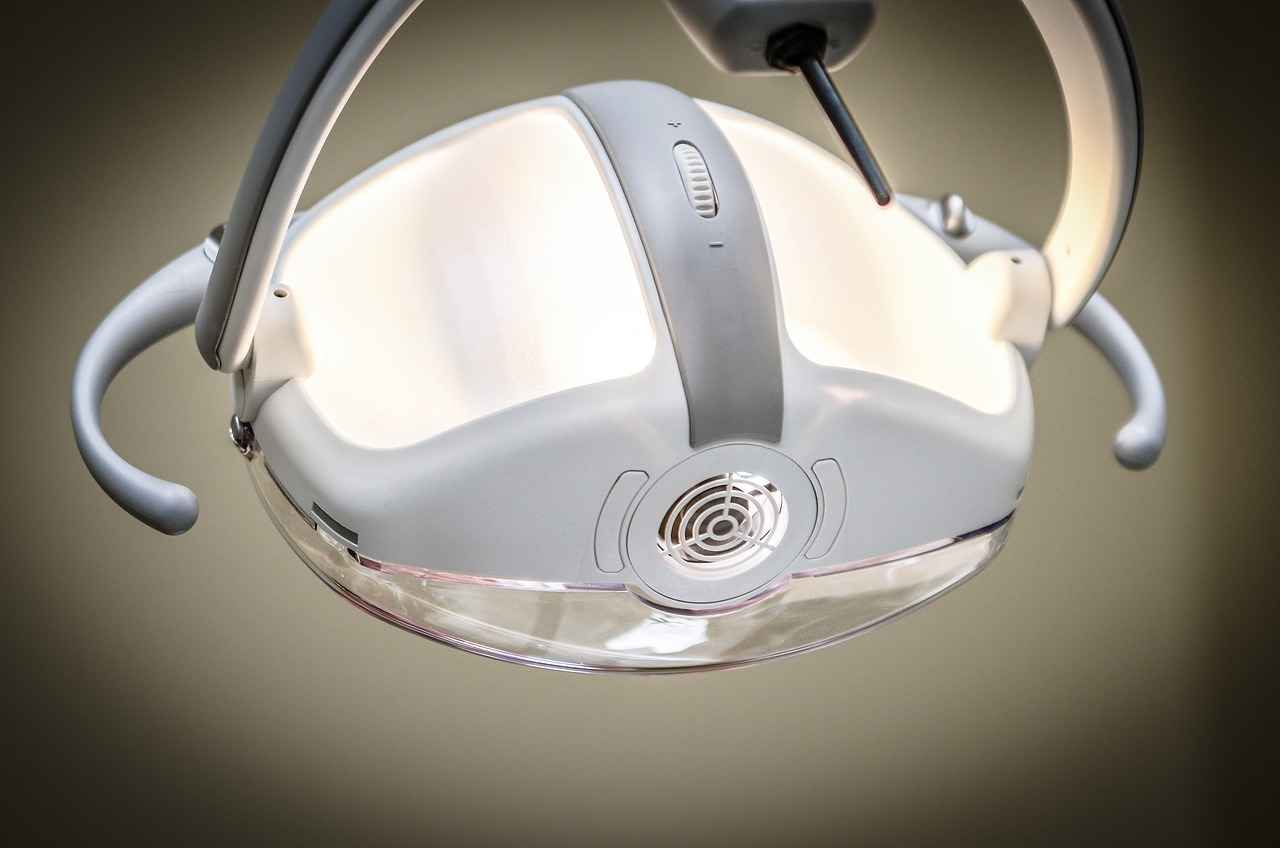This article provides a step-by-step guide on changing the headlight bulb in a Honda Accord, ensuring safety and clarity while driving at night. Properly functioning headlights are not just a requirement; they are essential for your safety and that of others on the road.
Understanding the importance of functioning headlights is crucial for safe driving. Dimming or burnt-out bulbs can compromise visibility and increase the risk of accidents. A well-lit path allows you to see potential hazards early and respond appropriately.
Before starting the replacement process, gather essential tools. You will typically need:
- A flathead screwdriver
- A pair of gloves
- A new headlight bulb
Having these tools ready can make the process smoother and more efficient.
Choosing the correct bulb is vital for compatibility. Check your vehicle’s manual or the bulb’s specifications to ensure you purchase the right type for your Honda Accord. Using the wrong bulb can lead to electrical issues or inadequate lighting.
Follow this systematic approach to replace your headlight bulb efficiently. Each step is designed to simplify the process and ensure proper installation.
Start by opening the hood of your Honda Accord. Secure it with the prop rod to prevent it from falling while you work on the headlight assembly.
Identify the headlight assembly where the bulb needs replacing. This is typically situated at the front of the vehicle, near the grille.
Carefully twist or unclip the headlight bulb cover to access the bulb. This step may vary based on the model year of your Honda Accord. Always refer to your vehicle’s manual for specific instructions.
Gently pull the old bulb out of the socket. Avoid touching the glass part of the new bulb with your fingers, as this can shorten its lifespan due to oil residue.
Once the old bulb is removed, you can proceed with installing the new one. Ensure the new bulb is securely fitted into the socket.
Insert the new bulb into the socket and twist it clockwise until it locks into place. This ensures a tight fit and proper functioning.
After securing the new bulb, reattach the headlight cover. Make sure it is properly sealed to prevent moisture from entering, which can cause further issues.
After installation, it’s critical to test the new headlight. Turn on your vehicle and check if the new bulb illuminates correctly, ensuring optimal visibility. If it doesn’t light up, double-check the installation steps.
Sometimes, issues may arise even after a successful bulb change. Common problems include:
- New bulb flickering or not lighting up
- Moisture inside the headlight assembly
- Electrical issues due to incorrect installation
Understanding these common problems can help you troubleshoot effectively.
If you encounter difficulties or are unsure about the process, it may be wise to consult a professional. Safety should always be your top priority. A certified mechanic can assist with any electrical issues or complex installations.
Regular maintenance can extend the life of your headlights. Here are some tips:
- Clean the lens regularly to remove dirt and grime.
- Check the bulbs periodically to ensure they are functioning.
- Inspect the headlight assembly for any signs of moisture or damage.
By following these maintenance tips, you can prevent future issues and ensure your headlights remain effective.

Why Change Your Headlight Bulb?
Understanding the importance of functioning headlights is crucial for safe driving. Dimming or burnt-out bulbs can severely compromise visibility, especially during nighttime or inclement weather conditions. This can increase the risk of accidents significantly. According to the National Highway Traffic Safety Administration (NHTSA), a considerable percentage of road accidents occur due to inadequate lighting. Therefore, ensuring that your headlights are in optimal condition is a vital aspect of vehicle maintenance.
Headlights serve multiple purposes beyond just illuminating the road ahead. They also make your vehicle visible to other drivers, thereby reducing the likelihood of collisions. When your headlights are not functioning correctly, you may find it challenging to see pedestrians, road signs, or other vehicles. This lack of visibility can lead to dangerous situations, particularly on poorly lit roads.
Moreover, faded or cloudy headlight lenses can further diminish the effectiveness of your headlights. Over time, exposure to UV rays and environmental contaminants can cause the plastic lens to become discolored, which can scatter light and reduce brightness. Regularly checking the condition of your headlights and lenses is essential for maintaining safety on the road.
Another critical factor to consider is the legal aspect of headlight functionality. Many states have laws requiring vehicles to have operational headlights. Driving with faulty headlights can result in fines or penalties, in addition to the safety risks involved. Therefore, it is not just a matter of personal safety but also compliance with traffic regulations.
In addition to safety and legal compliance, changing your headlight bulbs can enhance your driving experience. New, bright bulbs can improve clarity and reduce eye strain during long drives. Investing in high-quality bulbs can make a noticeable difference in how well you see the road and how well others see you.
When should you change your headlight bulbs? It is advisable to replace them every few years, even if they appear to be functioning. This proactive approach can prevent unexpected failures, especially during critical driving times. If you notice any flickering or dimming, it is a clear sign that a replacement is necessary.
In summary, the importance of changing your headlight bulb cannot be overstated. It is a simple yet effective way to ensure your safety and the safety of others on the road. Regular maintenance and timely replacements can prevent accidents, enhance visibility, and ensure compliance with traffic laws.

What Tools Do You Need?
When it comes to changing the headlight bulb on your Honda Accord, preparation is key. Having the right tools at your disposal not only makes the process smoother but also helps ensure that you can complete the task efficiently. Below, we will delve into the essential tools you will need for this job, providing insights into their importance and usage.
Before starting the replacement process, it is crucial to gather all necessary tools. This preparation will save you time and frustration during the actual bulb replacement. Here’s a list of the essential tools you will typically require:
- Flathead Screwdriver: This tool is essential for removing any screws or clips that may be securing the headlight assembly or cover. A flathead screwdriver is versatile and can be used to pry open covers gently without damaging them.
- Gloves: Wearing gloves is important to protect your hands from sharp edges and to avoid getting oils from your skin on the new bulb. Oil can shorten the lifespan of the bulb, so using gloves is a simple yet effective precaution.
- New Headlight Bulb: Make sure to purchase the correct replacement bulb for your Honda Accord. Refer to your vehicle’s manual or check the specifications on the old bulb to ensure compatibility. This is a vital step to ensure proper functionality.
- Towel or Cloth: Having a towel or cloth handy can be useful for cleaning the headlight lens or for wiping your hands during the process. Keeping your workspace clean can help avoid any unnecessary mess.
- Flashlight: If you are working in low-light conditions, a flashlight can be invaluable. It will help you see the headlight assembly clearly, allowing for easier access to the bulb and ensuring that you can work safely.
With these tools in hand, you are well-equipped to tackle the headlight bulb replacement process. Each tool plays a specific role in ensuring that the job is done correctly and safely. Remember, having the right tools not only simplifies the task but also enhances your overall experience, making it more enjoyable and less stressful.
By being prepared and organized, you can focus on the task at hand without interruptions. This preparation will ultimately lead to a successful headlight bulb replacement, ensuring that your Honda Accord is safe and road-ready.

How to Identify the Right Bulb?
Choosing the correct bulb for your Honda Accord is not just a matter of preference; it is essential for ensuring compatibility and optimal performance. The right bulb enhances visibility, improves safety, and prolongs the lifespan of your vehicle’s lighting system. Here are some key considerations to help you identify the right bulb:
- Consult the Owner’s Manual: Your vehicle’s owner manual is the first place to check for specific bulb types and specifications. This document provides detailed information on the correct bulb sizes and wattage needed for your headlights.
- Check the Existing Bulb: If you need to replace a bulb, you can remove the existing one and check for any markings or labels indicating its type. This is a straightforward method to ensure you purchase an identical replacement.
- Understand Bulb Types: Familiarize yourself with the different types of headlight bulbs available, such as halogen, HID (High-Intensity Discharge), and LED (Light Emitting Diode). Each type has unique characteristics, including brightness, lifespan, and energy efficiency.
- Verify Compatibility: Even if you find a bulb that matches the specifications, it is crucial to verify its compatibility with your specific model year of the Honda Accord. Some models may have different lighting systems, so double-checking is vital.
- Consider Your Driving Conditions: Depending on your driving habits, you might want to choose bulbs with higher luminosity for better visibility in low-light conditions. This is especially important for those who frequently drive at night or in adverse weather.
When shopping for a new headlight bulb, consider purchasing from reputable brands that offer quality products. Quality bulbs often come with better warranties and are more reliable in terms of performance and longevity.
Additionally, you can consult with automotive professionals or experts at auto parts stores. They can provide valuable insights and recommendations based on your vehicle’s specific needs. This step can save you time and ensure you make an informed decision.
Remember, installing the correct bulb is only part of the equation. Regular maintenance and checks are necessary to ensure your headlights are functioning optimally. Make it a habit to inspect your headlights periodically and replace any bulbs that show signs of wear or reduced brightness.
By taking the time to identify the right bulb for your Honda Accord, you enhance your driving experience and ensure your safety on the road. Proper lighting not only improves visibility but also helps other drivers see you, reducing the chances of accidents. Don’t underestimate the importance of this simple yet crucial component of your vehicle.

Step-by-Step Guide to Changing the Bulb
Changing a headlight bulb might seem daunting, but with a systematic approach, you can complete the task efficiently and with confidence. Each step outlined below is designed to simplify the process, ensuring that you achieve a proper installation and enhance your vehicle’s safety.
- Step 1: Open the Hood
Begin by opening the hood of your Honda Accord. Use the prop rod to keep it securely open, allowing you ample space to work on the headlight assembly without any interruptions. - Step 2: Locate the Headlight Assembly
Identify the headlight assembly that houses the bulb you need to replace. This component is typically located at the front of the vehicle, right next to the grille. Familiarizing yourself with its position will save you time during the replacement process. - Step 3: Remove the Headlight Bulb Cover
Carefully twist or unclip the headlight bulb cover to gain access to the bulb. Depending on your Honda Accord’s model year, this step may vary slightly, so take your time to avoid damaging any clips or covers. - Step 4: Disconnect the Old Bulb
Gently pull the old bulb out of its socket. It’s crucial to avoid touching the glass part of the new bulb with your fingers, as the oils from your skin can reduce its lifespan. Instead, handle the new bulb by its base. - Step 5: Install the New Headlight Bulb
Once the old bulb is removed, carefully insert the new bulb into the socket. Ensure it is positioned correctly and securely, as a loose bulb can lead to malfunctioning lights. - Step 6: Secure the Bulb
Twist the new bulb clockwise until you hear a click, indicating that it is locked in place. This step is vital for ensuring that the bulb functions correctly and doesn’t fall out while driving. - Step 7: Replace the Headlight Cover
After securing the new bulb, reattach the headlight cover. Make sure it is properly sealed to prevent moisture from entering, which can lead to further complications. - Step 8: Test the New Headlight
Finally, turn on your vehicle and check the headlight to ensure that the new bulb illuminates correctly. This is crucial for maintaining optimal visibility while driving at night.
By following these steps, you can efficiently replace your headlight bulb and ensure your Honda Accord is safe for nighttime driving. Remember, regular maintenance of your headlights is essential for road safety, so consider checking them periodically.
If you encounter any issues during the replacement process, such as difficulty removing the cover or if the new bulb does not illuminate, it may be wise to consult a professional. Safety should always be your top priority.
Step 1: Open the Hood
When it comes to changing the headlight bulb of your Honda Accord, the first step is crucial: opening the hood. This may seem straightforward, but doing it correctly sets the stage for a successful bulb replacement.
To begin, locate the hood release lever inside your vehicle, usually found on the driver’s side, near the footwell. Pull this lever to release the hood latch. Once you hear a click, proceed to the front of the car. Here, you will find a secondary latch that secures the hood. Slide your hand under the center of the hood, feel for the latch, and push it to the side while lifting the hood gently.
After lifting the hood, it’s essential to secure it with the prop rod. This rod is typically located on the underside of the hood. Position the rod into the designated slot to prevent the hood from falling while you work on the headlight assembly. This step is not just about convenience; it’s a vital safety measure. A falling hood can cause serious injury or damage to the vehicle.
Many DIY enthusiasts overlook the importance of securing the hood. However, it’s essential to ensure that you have both hands free to work on the headlight assembly without the worry of the hood unexpectedly closing. A securely propped hood allows for greater accessibility and focus on the task at hand, reducing the risk of accidents.
Once the hood is securely open, take a moment to familiarize yourself with the engine bay layout. Locate the headlight assembly, which is typically situated at the front corners of the vehicle. Having a clear understanding of the components will make the next steps easier and more efficient.
- Wear gloves: This protects your hands from sharp edges and keeps the bulb clean.
- Use safety glasses: Protect your eyes from any debris that may fall while you work.
- Ensure the engine is off: This prevents any risk of burns or electrical issues.
By following these steps, you set yourself up for a smooth and safe headlight bulb replacement process. Remember, taking the time to open the hood properly and secure it can save you from potential mishaps during your maintenance work.
Step 2: Locate the Headlight Assembly
When it comes to changing the headlight bulb in your Honda Accord, a crucial step is to locate the headlight assembly. This is where the bulb that needs replacing is situated, and understanding its location can make the replacement process much smoother. The headlight assembly is typically positioned at the front of the vehicle, just adjacent to the grille. Knowing this can save you time and effort, especially if you’re unfamiliar with your vehicle’s layout.
To identify the headlight assembly, you can start by standing in front of your Honda Accord. The assembly consists of a clear plastic lens that houses the headlight bulb and is often surrounded by a metal or plastic housing. Depending on the model year of your Accord, the design may vary slightly, but the basic location remains consistent across most models.
Once you have located the headlight assembly, it’s important to examine it closely. Look for any signs of damage or wear, such as cracks in the lens or corrosion on the housing. These issues can affect the performance of your headlights and may require further attention beyond just a bulb replacement.
In some cases, accessing the headlight assembly may require moving other components, such as the battery or air intake system, especially in newer models where space is more constrained. If you encounter any obstacles, consult your vehicle’s manual for specific guidance on removing these components safely.
After ensuring you have a clear view of the headlight assembly, the next step is to examine the bulb itself. There are typically two bulbs in the assembly: one for low beams and another for high beams. Make sure to determine which bulb needs replacement. This can usually be done by turning on your headlights and observing which one is not functioning.
To facilitate the process, having a flashlight can be beneficial, especially if you’re working in a dimly lit garage or at night. A flashlight will help you see the assembly clearly and identify the correct bulb that requires replacement.
In summary, locating the headlight assembly is a straightforward yet essential step in the headlight bulb replacement process. By ensuring you know precisely where to look, you can streamline the entire replacement process and enhance your vehicle’s safety and visibility on the road.
As you proceed, remember to handle the bulbs with care. Avoid touching the glass part of the new bulb, as oils from your skin can cause it to burn out prematurely. Instead, handle the bulb by its base. This simple precaution can help you avoid common pitfalls associated with headlight bulb replacements.
With the headlight assembly identified and ready for the next steps, you can confidently move forward with the bulb replacement process, ensuring that your Honda Accord remains safe and roadworthy.
Step 3: Remove the Headlight Bulb Cover
Changing the headlight bulb in your Honda Accord is an essential skill for any car owner. One crucial step in this process is the removal of the headlight bulb cover. This guide will provide detailed insights and tips for successfully completing this task.
To access the headlight bulb, you must first remove the headlight bulb cover. This step is critical as it allows you to reach the bulb itself for replacement. Here’s how to do it:
- Identify the Cover: The headlight bulb cover is typically located at the back of the headlight assembly. Depending on the model year of your Honda Accord, the cover may be a simple twist-off or may require unclipping.
- Prepare for Removal: Before you begin, ensure that your vehicle is turned off and the keys are removed from the ignition. This is crucial for safety.
- Use the Right Technique: If your cover has a twist mechanism, gently twist it counterclockwise to loosen it. If it is clipped, carefully unclip it by pressing the tabs or pulling gently. Avoid using excessive force, as this can lead to damage.
- Check for Obstructions: In some cases, other components may obstruct access to the cover. If needed, adjust or move any components that may be in the way, ensuring you don’t damage any wires or parts.
Once the cover is removed, you will have direct access to the headlight bulb. It’s important to handle the bulb with care, as the glass can be sensitive and oils from your skin can shorten its lifespan.
Removing the headlight bulb cover is vital for a few reasons:
- Access to the Bulb: Without removing the cover, you cannot replace the bulb, which is essential for maintaining visibility while driving.
- Preventing Moisture Damage: A properly sealed cover protects the bulb from moisture and dirt. If the cover is damaged or not reattached correctly, it can lead to premature bulb failure.
While removing the headlight bulb cover, you may encounter some common issues:
- Stuck Covers: If the cover is stuck, try gently wiggling it while twisting or unclipping. If it still doesn’t budge, check for any screws or additional clips that may need to be removed.
- Cracked Covers: Inspect the cover for cracks or damage. If you notice any, it’s advisable to replace it to ensure proper sealing.
By following these steps and tips, you can efficiently remove the headlight bulb cover on your Honda Accord. This process will set you up for a successful bulb replacement, enhancing your vehicle’s safety and performance.
Step 4: Disconnect the Old Bulb
Changing a headlight bulb can seem daunting, but with the right approach, it’s a straightforward task that anyone can accomplish. In this section, we will delve into the crucial step of disconnecting the old bulb, ensuring you do it safely and efficiently.
When it comes to disconnecting the old headlight bulb, precision and care are essential. This step is vital for ensuring that the new bulb operates effectively and has a long lifespan. Here’s how to do it:
- Gently Pull Out the Old Bulb: Start by ensuring your vehicle is turned off and the headlights are cool to the touch. With a steady hand, gently grasp the old bulb and pull it straight out of the socket. Avoid using excessive force, as this could damage the socket or wiring.
- Handle with Care: It is crucial to avoid touching the glass part of the new bulb with your fingers. The oils from your skin can create hot spots on the glass, leading to premature failure. Instead, consider using a clean cloth or gloves to handle the new bulb.
- Inspect the Socket: After removing the old bulb, take a moment to inspect the socket for any signs of corrosion or damage. If you notice any issues, it may be necessary to address them before installing the new bulb to ensure optimal performance.
Following these steps will help you disconnect the old bulb without complications. It’s important to remain patient and attentive during this process, as rushing can lead to mistakes or damage.
Many car owners may wonder why it’s so important to avoid touching the glass part of the new bulb. The reason lies in the heat generated during operation. When the bulb is turned on, it heats up rapidly. Oils from your fingers can create uneven heating, which may lead to the bulb burning out prematurely. Therefore, it’s best to handle the bulb by its base or use a cloth for support.
Occasionally, you may encounter a stubborn bulb that refuses to budge. Here are some tips to help:
- Twist Gently: If the bulb seems stuck, try gently twisting it while pulling. This can help loosen any debris or corrosion holding it in place.
- Use Lubrication: In some cases, a small amount of silicone spray can be applied around the socket to ease the removal process. Just ensure it doesn’t come into contact with the new bulb.
- Check the Manual: If you’re having trouble, consult your vehicle’s manual for specific instructions related to your model. Different models may have unique mechanisms for bulb removal.
By following these guidelines, you can safely disconnect the old headlight bulb and prepare for the installation of your new bulb. Remember, taking your time during this step will pay off in the long run, ensuring your headlights shine brightly and safely on the road.

Installing the New Headlight Bulb
When it comes to ensuring your vehicle’s safety, installing a new headlight bulb is a crucial task that should not be overlooked. After successfully removing the old bulb, you are now ready to proceed with the installation of the new one. This step is vital for maintaining optimal visibility on the road, especially during nighttime driving or in adverse weather conditions.
Follow these detailed steps to ensure that the new bulb is installed correctly and securely:
- Step 1: Prepare the New Bulb – Before handling the new bulb, make sure to wear gloves to prevent any oils from your skin from transferring onto the glass. This is important because such oils can lead to premature failure of the bulb.
- Step 2: Align the Bulb – Take the new headlight bulb and carefully align it with the socket. It is essential to ensure that the bulb’s connectors match the socket configuration. This step is critical for proper electrical contact.
- Step 3: Insert the Bulb – Gently push the bulb into the socket. You should feel a slight resistance as it fits into place. Avoid using excessive force, as this can damage both the bulb and the socket.
- Step 4: Secure the Bulb – Once the bulb is in place, twist it clockwise until it locks securely. This step is crucial as it ensures that the bulb is held firmly, preventing it from dislodging while driving.
- Step 5: Check the Connection – After securing the bulb, double-check to ensure that it is properly seated in the socket. A loose connection can lead to flickering or complete failure of the headlight.
Once the new bulb is installed, it’s time to reassemble everything:
- Step 6: Replace the Headlight Cover – Carefully reattach the headlight cover, ensuring it is sealed properly to prevent moisture from entering. This is vital for the longevity of the bulb.
- Step 7: Test the New Headlight – Before closing the hood, turn on your vehicle and test the new headlight. Make sure it illuminates correctly. This quick check can save you time and effort in case the installation was not successful.
By following these steps, you can ensure that your new headlight bulb is installed correctly, providing you with the visibility you need while driving. Remember, proper installation not only enhances safety but also extends the life of your new bulb.
In conclusion, changing a headlight bulb might seem like a simple task, but attention to detail during the installation process is essential. If you encounter any issues or feel uncertain at any point, do not hesitate to consult a professional mechanic for assistance.
Step 5: Secure the Bulb
Replacing the headlight bulb in your Honda Accord is a straightforward process, but ensuring that the new bulb is securely installed is essential for optimal performance. In this section, we will delve into the specific steps required to secure the bulb effectively.
When you replace a headlight bulb, it is crucial to ensure that it is properly secured in the socket. A loose bulb can lead to flickering lights, reduced illumination, and even damage to the headlight assembly. Additionally, a secure fit helps to prevent moisture and dirt from entering the housing, which can cause further complications.
Once you have removed the old bulb and are ready to install the new one, follow these steps carefully:
- Align the Bulb: Begin by aligning the base of the new bulb with the socket. Ensure that any notches or grooves on the bulb match up with the corresponding features in the socket.
- Insert the Bulb: Gently push the bulb into the socket. Be careful not to apply excessive force, as this could damage the bulb or the socket.
- Twist to Secure: Once the bulb is in place, twist it clockwise until you hear or feel it click into position. This indicates that the bulb is locked securely in the socket.
- Check for Stability: After securing the bulb, give it a gentle tug to ensure it is firmly in place. A properly installed bulb should not move or wobble.
To ensure the longevity and functionality of your new headlight bulb, consider the following best practices:
- Avoid Touching the Glass: When handling the new bulb, avoid touching the glass part with your fingers. Oils from your skin can create hot spots when the bulb is lit, leading to premature failure.
- Use Gloves: Wearing gloves while handling the bulb can help prevent any accidental contact and maintain the integrity of the bulb.
- Inspect the Socket: Before inserting the new bulb, check the socket for any signs of corrosion or damage. Cleaning the socket can improve the connection and performance of the new bulb.
After you have secured the new bulb, it is important to complete the installation process:
1. Replace the headlight cover to protect the bulb from dust and moisture.2. Ensure that the cover is sealed properly to prevent any leaks.3. Finally, test the new headlight to confirm it is functioning correctly.
By following these steps and best practices, you can ensure that your new headlight bulb is securely installed, providing you with the visibility and safety you need while driving at night.
Step 6: Replace the Headlight Cover
Replacing the headlight bulb in your Honda Accord is a straightforward process, but it’s crucial to ensure that every step is completed correctly for optimal safety and functionality. One of the final steps in this process is replacing the headlight cover, which plays a significant role in protecting the bulb and maintaining the integrity of the headlight assembly.
After you have successfully installed the new headlight bulb, the next step is to reattach the headlight cover. This step is not just a formality; it is essential for several reasons:
- Protection Against Moisture: A properly sealed headlight cover prevents moisture from entering the assembly, which can cause the bulb to fail prematurely.
- Dust and Debris Shield: The cover acts as a barrier against dust and debris, which can scratch the lens or interfere with the light output.
- Maintaining Aesthetic Appeal: A well-fitted cover ensures that your vehicle looks polished and well-maintained.
Follow these detailed steps to ensure that the headlight cover is securely reattached:
- Align the Cover: Position the headlight cover over the assembly, ensuring that it aligns correctly with the mounting points. Misalignment can lead to gaps that allow moisture and debris to enter.
- Secure the Cover: Depending on your Honda Accord model, you may need to twist, snap, or clip the cover back into place. Make sure you hear a click or feel a secure fit, indicating that it is locked in.
- Check the Seal: After securing the cover, visually inspect the edges to ensure that it is sealed tightly. A proper seal is crucial for preventing water ingress.
- Test the Assembly: Before closing the hood, gently shake the headlight assembly to ensure that the cover is firmly in place and does not move.
While replacing the headlight cover, be aware of these common issues:
- Improper Fit: If the cover does not fit snugly, it may need to be adjusted or replaced.
- Visible Gaps: Any gaps between the cover and the assembly can lead to moisture buildup, which can damage the bulb and electrical components.
Once you have reattached the headlight cover, it’s essential to perform a final check:
- Inspect the Bulb: Turn on your headlights to ensure the new bulb is functioning correctly.
- Check for Leaks: After a rainy day or a car wash, inspect the headlight assembly for any signs of moisture.
By following these steps, you can ensure that your new headlight bulb is well-protected and functioning optimally. Regular maintenance and inspections can help prolong the life of your headlights, ensuring safe driving conditions at night.

Testing the New Headlight
Once you have successfully installed the new headlight bulb in your Honda Accord, the next crucial step is to test the new headlight. This ensures that everything is functioning correctly and that your vehicle is safe for nighttime driving.
To begin the testing process, follow these steps:
- Start Your Vehicle: Turn on your Honda Accord and ensure that the engine is running. This is important as the electrical system needs to be active to power the headlights.
- Activate the Headlights: Switch on the headlights using the control switch. Depending on your vehicle, this might be a lever or a knob located on the steering column or dashboard.
- Observe the Illumination: Step outside your vehicle and observe the new bulb. It should illuminate brightly and evenly. Check for any flickering or dimness, which could indicate an installation issue.
- Check Alignment: Ensure that the headlight beam is properly aligned. Misalignment can lead to poor visibility and can blind other drivers. You can do this by parking your car on a level surface about 25 feet away from a wall and observing the light pattern.
If the new bulb does not illuminate as expected, it is essential to troubleshoot the issue:
- Double-Check Connections: Make sure that the bulb is securely connected in the socket. A loose connection can prevent the bulb from receiving power.
- Inspect the Bulb: If the bulb is not lighting up, it may be defective. Consider replacing it with another new bulb to rule out this possibility.
- Examine Fuses and Wiring: If the bulb is correctly installed but still not functioning, check the vehicle’s fuse box for any blown fuses related to the headlights. Additionally, inspect the wiring for any signs of damage or corrosion.
After confirming that the new headlight is working correctly, it’s advisable to take a moment to test the other headlight as well. This ensures that both headlights are functioning optimally, which is crucial for safety.
In summary, testing your new headlight is a vital step that should not be overlooked. Proper illumination is essential for safe driving, especially during nighttime or adverse weather conditions. By following these simple steps, you can ensure that your new headlight is functioning as intended, providing you with the visibility you need on the road.
Remember, regular maintenance of your headlights, including periodic testing and cleaning, can significantly enhance your driving experience and safety.

Common Issues After Replacement
When you change the headlight bulb in your Honda Accord, you expect everything to function perfectly. However, sometimes issues may arise even after a successful bulb change. Understanding these common problems can help you troubleshoot effectively and ensure that your vehicle remains safe and roadworthy.
After replacing the bulb, if it does not illuminate, there could be several reasons behind this. One common issue is a poor connection. Ensure that the bulb is securely seated in the socket and that the connections are clean and free from corrosion. If the connections are loose, the electrical current may not flow properly, preventing the bulb from lighting up.
A flickering headlight can be frustrating and dangerous. This issue might indicate a problem with the wiring or the bulb itself. Check the wiring harness for any signs of wear or damage. Additionally, ensure that the bulb is compatible with your vehicle’s electrical system. Sometimes, a faulty bulb can also cause flickering, so consider replacing it again if necessary.
If your new headlight appears dim, it could be due to several factors. First, check the voltage being supplied to the bulb; a lower voltage can lead to reduced brightness. Also, inspect the headlight lens for cloudiness or dirt, as this can significantly diminish light output. Regular cleaning and maintenance of the lens can help maintain optimal brightness.
Yes, electrical issues can arise and manifest as problems with your new headlight. A blown fuse is a common culprit, so check the vehicle’s fuse box for any blown fuses associated with the headlight circuit. If the fuse is intact, there might be a deeper electrical issue, such as a malfunctioning relay or wiring problem, that requires professional diagnosis.
Experiencing rapid burnout of new headlight bulbs is not normal and can indicate several underlying issues. Overvoltage from the vehicle’s electrical system can cause bulbs to fail prematurely. Additionally, if the bulb was installed improperly, such as touching the glass with bare hands, this can lead to early burnout due to oil residue that generates heat.
- Inspect the Bulb: Ensure the bulb is not damaged and is the correct type.
- Check Connections: Look for loose or corroded connections.
- Examine the Fuse: Check for blown fuses in the headlight circuit.
- Test Voltage: Use a multimeter to check the voltage at the bulb socket.
- Consult a Professional: If issues persist, seek help from a qualified mechanic.
By understanding these common issues and their potential solutions, you can effectively troubleshoot problems that arise after changing your headlight bulb. Always prioritize safety and visibility while driving, and don’t hesitate to seek professional assistance if needed.

When to Seek Professional Help?
Changing a headlight bulb in your Honda Accord can seem straightforward, but there are times when seeking professional help is not just advisable, but necessary. Understanding when to consult an expert can save you time, prevent potential damage, and ensure your safety on the road.
- Unusual Sounds or Smells: If you notice strange noises or burning smells while attempting to change the bulb, stop immediately. This could indicate a deeper electrical issue.
- Difficulty Accessing the Bulb: Some models may have complex headlight assemblies that are hard to navigate. If you’re struggling, a professional can handle it with ease.
- Multiple Bulbs Burned Out: If more than one headlight bulb has failed, it might be indicative of a larger electrical problem that requires expert diagnosis.
While many car maintenance tasks can be performed at home, headlight replacement can be tricky. Incorrect installation can lead to:
- Shortened Bulb Lifespan: Touching the glass of the bulb can cause it to burn out quickly due to oil from your fingers.
- Electrical Damage: Misconnecting the wiring can lead to blown fuses or damage to the vehicle’s electrical system.
- Inadequate Lighting: Improperly installed bulbs may not align correctly, reducing visibility and increasing the risk of accidents.
When you decide to seek professional help, you can expect a few key things:
- Assessment and Diagnosis: A qualified technician will assess your vehicle to identify any underlying issues.
- Quality Parts and Tools: Professionals have access to high-quality replacement parts and specialized tools that ensure a proper fit and function.
- Expert Installation: Your headlight will be replaced correctly, ensuring optimal performance and safety.
When looking for a professional, consider the following:
- Check Reviews: Look for mechanics with positive customer feedback and high ratings on platforms like Yelp or Google.
- Ask for Recommendations: Friends and family can provide valuable insights into trustworthy mechanics.
- Verify Certifications: Ensure that the mechanic is certified and has experience with your vehicle make and model.
Ultimately, your safety should always be your top priority. If you find yourself unsure about the replacement process or encounter any obstacles, it’s wise to consult a professional. This not only ensures that the job is done correctly but also gives you peace of mind while driving at night.
In conclusion, while changing a headlight bulb can be a simple task, there are instances where professional intervention is necessary. Recognizing the signs that indicate the need for expert help can save you from potential hazards and costly repairs.

Maintenance Tips for Headlights
Maintaining your headlights is not just about aesthetics; it significantly impacts your driving safety. Regular maintenance can extend the life of your headlights, ensuring they remain bright and effective. Below are some essential tips to keep your headlights in optimal condition.
Headlights are crucial for visibility during nighttime driving or adverse weather conditions. Dimming or burnt-out bulbs can severely compromise your ability to see the road and be seen by other drivers. Regular maintenance helps prevent these issues, enhancing your safety on the road.
Over time, headlight lenses can accumulate grime and become cloudy, reducing light output. Here’s how to clean them effectively:
- Gather Materials: You will need a headlight restoration kit or a mixture of baking soda and vinegar, a microfiber cloth, and water.
- Apply the Cleaner: If using a restoration kit, follow the instructions. For the baking soda solution, mix a few tablespoons of baking soda with vinegar to form a paste.
- Scrub Gently: Use the microfiber cloth to apply the paste, scrubbing in circular motions to remove oxidation and grime.
- Rinse and Dry: Rinse the lenses with clean water and dry them thoroughly to prevent water spots.
Regularly checking your headlight bulbs is vital for ensuring they function correctly. Here are some tips:
- Visual Inspection: Take a moment to inspect your headlights every month. Look for any signs of dimming or flickering.
- Test Regularly: Turn on your headlights regularly to ensure they illuminate properly. If you notice any inconsistencies, it might be time to replace them.
- Check for Moisture: Inspect the headlight assembly for any moisture buildup, which can indicate a seal failure and lead to bulb damage.
If you notice your headlights are failing, it’s crucial to address the issue promptly:
- Replace Burnt-Out Bulbs: If a bulb is burnt out, replace it with a new one that matches the specifications outlined in your vehicle’s manual.
- Seek Professional Help: If you are unsure about the condition of your headlights or if they require more than just bulb replacement, consult a professional mechanic.
As a general rule, it’s advisable to perform a thorough inspection and cleaning of your headlights every six months. This frequency helps ensure that any potential issues are caught early, allowing for timely repairs or replacements.
- Avoid Touching Bulbs: When replacing headlight bulbs, avoid touching the glass part with your fingers, as oils from your skin can cause the bulb to burn out prematurely.
- Keep Lenses Sealed: Ensure that the headlight covers are properly sealed to prevent moisture from entering and damaging the bulbs.
- Use UV Protection: Consider applying a UV sealant to protect the lenses from sun damage, which can cause them to yellow over time.
By following these maintenance tips, you can ensure your headlights remain bright and functional, enhancing your safety and driving experience. Remember, a little bit of care goes a long way in extending the life of your headlights.
Frequently Asked Questions
- How often should I change my headlight bulbs?
It’s generally recommended to change your headlight bulbs every 12 to 24 months, depending on usage and driving conditions. If you notice dimming or flickering, it’s time for a change!
- Can I replace a headlight bulb myself?
Absolutely! Replacing a headlight bulb is a straightforward task you can do at home with minimal tools. Just follow the steps outlined in the guide, and you’ll be good to go!
- What if my new headlight bulb doesn’t work?
If the new bulb doesn’t light up, double-check the installation. Ensure it’s securely fitted in the socket. If it still doesn’t work, there might be an issue with the wiring or fuse.
- Do I need to replace both headlights at the same time?
While it’s not mandatory, it’s a good idea to replace both headlights simultaneously. This ensures even brightness and helps maintain consistent visibility while driving.
- Are there different types of headlight bulbs for my Honda Accord?
Yes! Honda Accords may use different types of bulbs depending on the model year. Always check your vehicle’s manual or specifications to get the right type.



